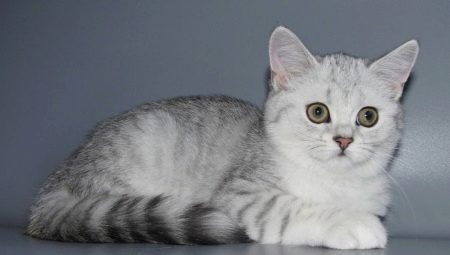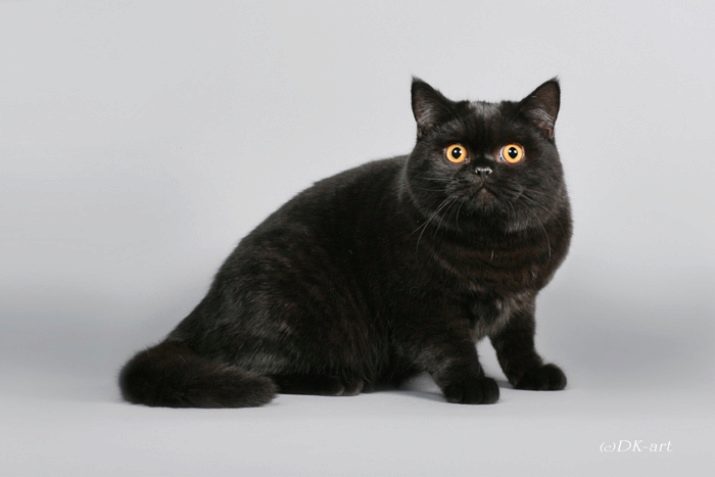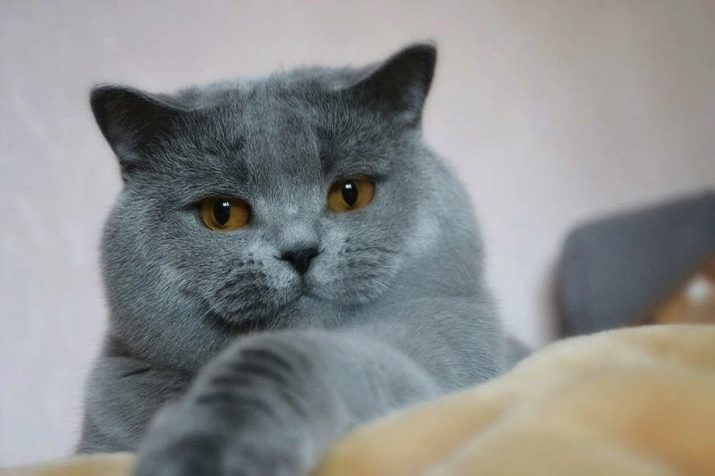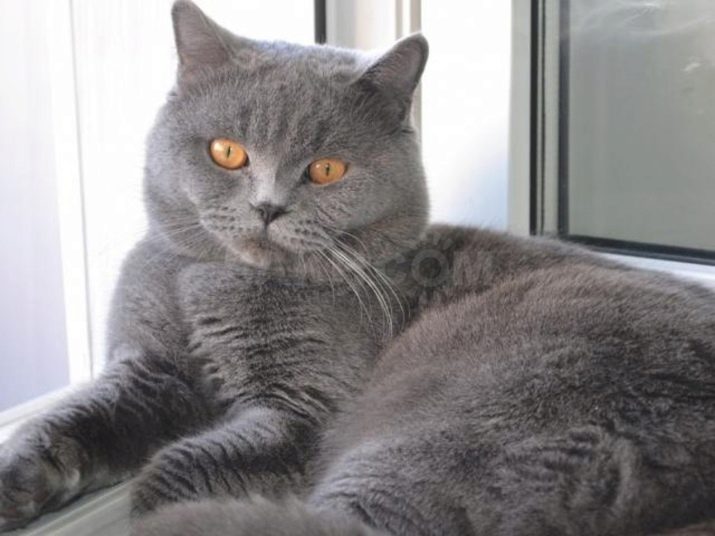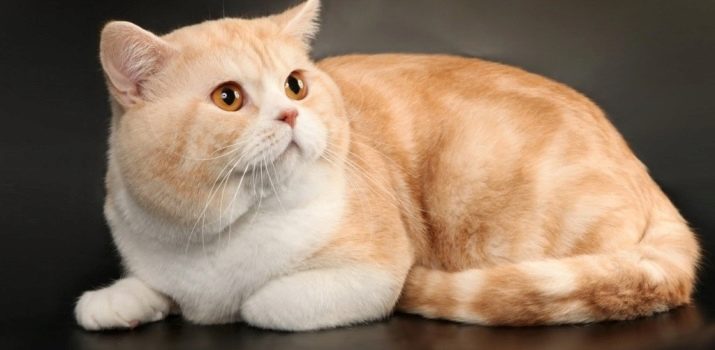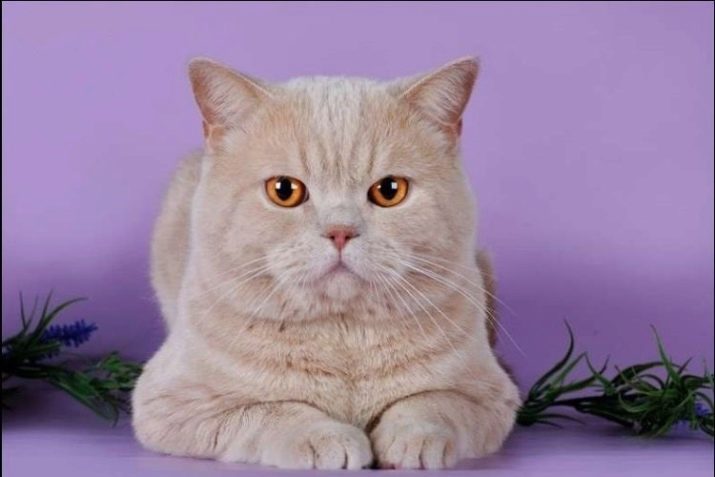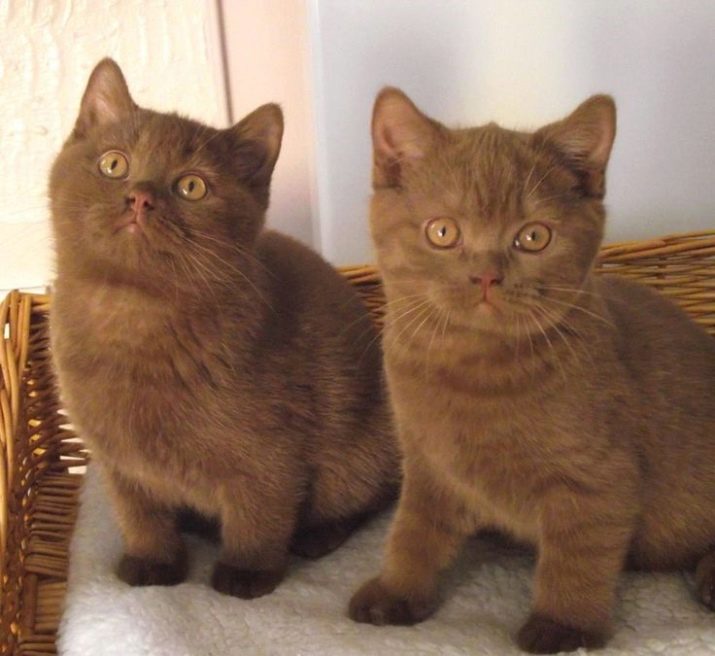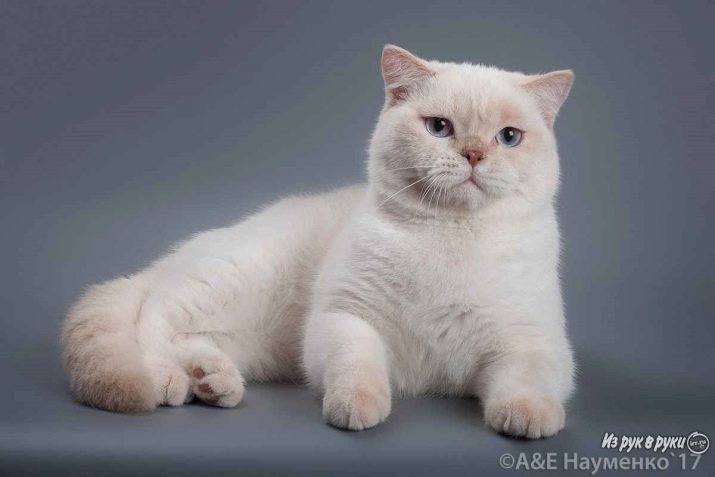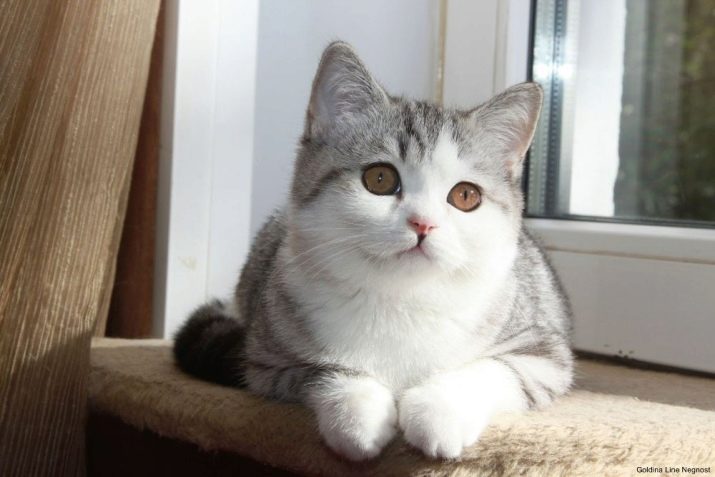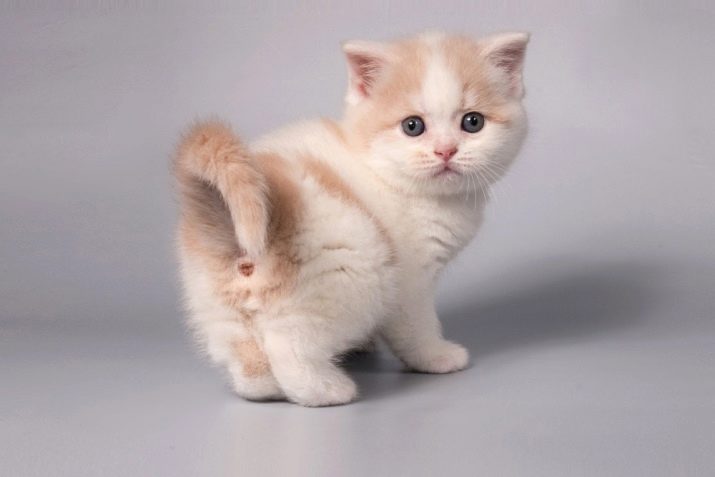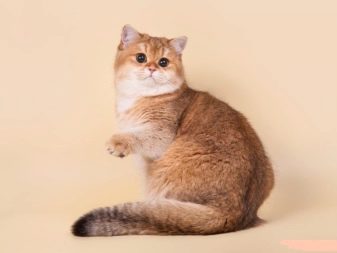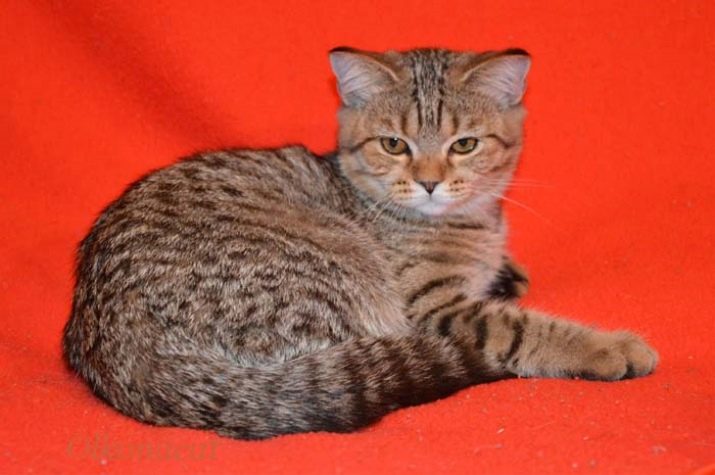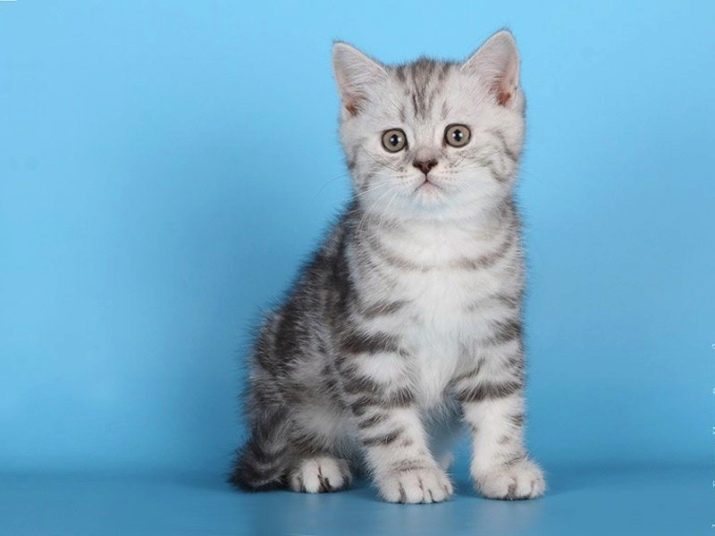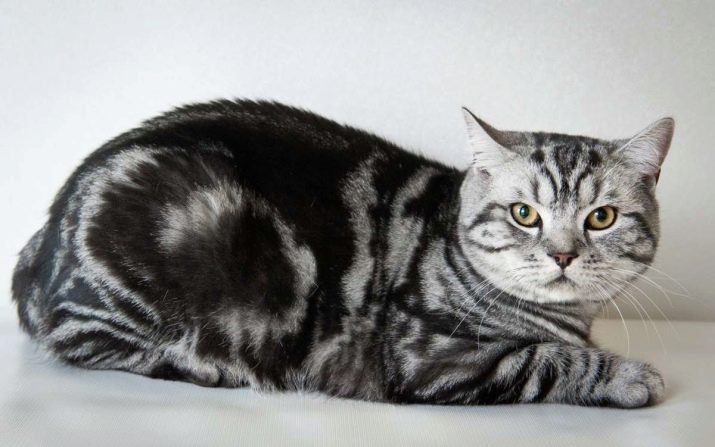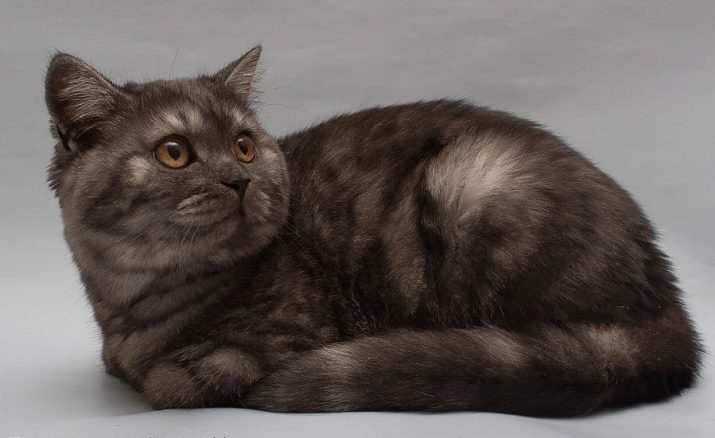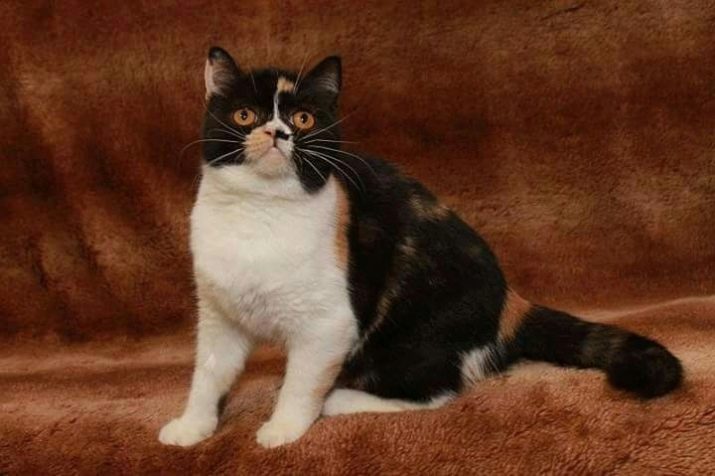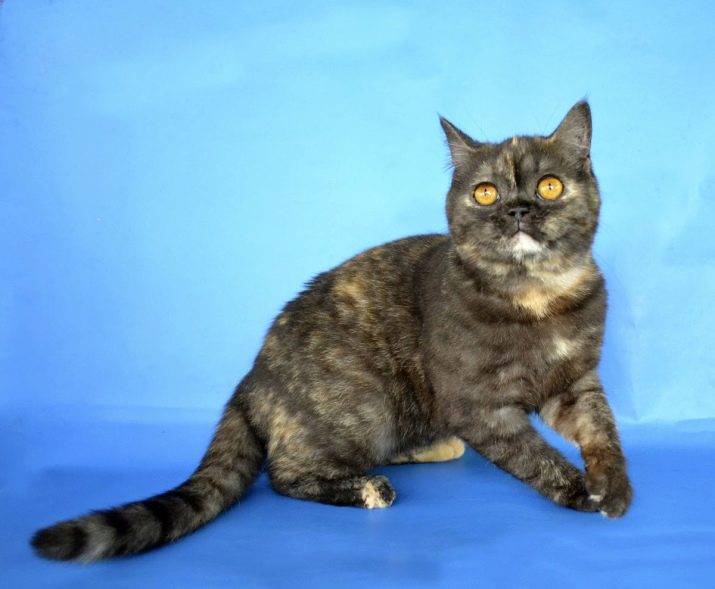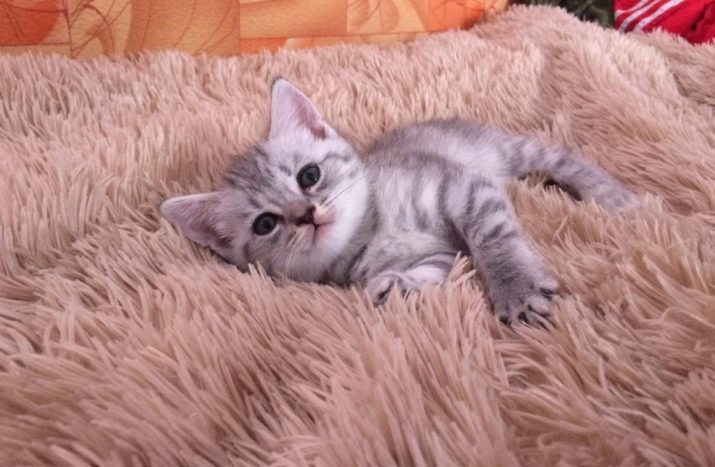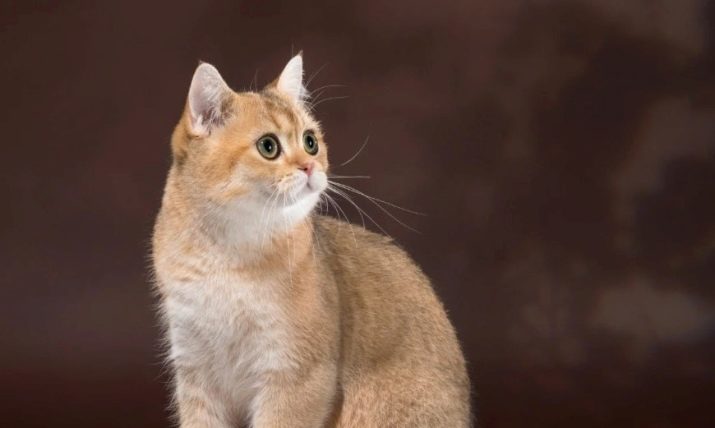A variety of, but always impressive colors Scottish straight cats allow each owner to find a pet for the soul. Animals of this breed have a balanced character, a high level of intelligence, and their wool does not require special care. Black and red, gray and white straight-eared cats have a rather short six, which does not cause much trouble during the molt. And for lovers of the exotic, marble and smoky, blue and striped Scottish Straights will be interesting.
Classic colors
Scottish Straight cats with a classic short or long (highland) woolen coat look teddy thanks to a well-developed undercoat. The breed is characterized by the presence of 2 basic colors: black and white, in a mix giving the most unexpected combinations. And also often there are options of monophonic (solid) shades.
- The black. The bright black coat of the Scottish Straight cat has a silky sheen. The standard allowed the presence of several white hairs, but the presence of red or brown tan is considered a tribal marriage.
- White. An unusual beautiful white Scottish straight-eared cat may have specks of a different color in childhood, but adult animals must have a clean suit without any splashes. With a fur coat of a shade of snow eyes of copper or amber color are in harmony. Different shades of the iris are allowed. In this case, one eye may be orange, and the second - blue.
- Chocolate. This color is not too typical for cats Scottish Straight, it is rare. Brown deep-colored fur coat must necessarily be monotonous without tan and other characteristic color transitions. The darker the chocolate tone, the more noble it is. Genetically inherited brown color suggests the presence of bicolors or color points in the pedigree with a predominance of saturated coffee or cinnamon.
- Purple. And also this coloring in Scottish straight-eared cats is called lavender. It turns out this color color in the presence of animals in the pedigree of lilac color points or ancestors with the same solid tone of the fur coat. Often you can hear that lavender color is called "coffee with milk." It is rather tender, provides for a yellow-orange, amber or copper shade of eyes. The nose is allowed only a light brown shade.
- Blue. Most often the Scottish straight-eared cat or cat has a highly advertised blue shade of wool. This color is often referred to by its English name: Blue. Hue can range from saturated blue, gray to flawless blue. On the surface of the coat in small kittens allowed the presence of patterns, patterns, disappear with the growth of the animal. The first 3 months after birth is allowed the presence of copper-colored eyes.
- Gray Scottish Straight cat also often refers to the blue type of colors. The intensity of the ashen color of her coat can vary. But the tone must be uniform, pronounced, without extraneous inclusions.
- Redhead Red and red colors are incredibly rare in cats of this breed. Gentle peach background wool is most often combined with brighter guard hair. Defect of the tail, expressed in the uneven distribution of shades of red and red, is typical for kittens and for adult animals. Mandatory solid background with different intensity of color.
Patterns can be observed on the forehead, fore and hind legs, but they are not included in the mandatory list of inherited traits.
- Cream. It is distinguished by muffled, powdered basic red-red color gamut. The color is rather close to sandy, the presence of indistinctly traced ornaments on the paws and in the tail part is allowed. Marriage is the presence of spots similar to those that cover the skin of leopards.
- Cinnamon. Chocolate brown color, similar to milk chocolate or toffee. Light gentle tone looks very presentable. Color cinnamon implies the presence of beige or pink-brown nose, paw pads. Other shades are not allowed.
- Faun. Color, which is often confused with purple. And it is also called deer. The beige-pink shade of a fur coat is similar to the color of the nose and paw pads, it looks very unusual and attractive. Eye color - orange, copper, amber, rich and bright.
Bicolor colors
Bicolor colors imply the presence of a white tone. It manifests itself on a mandatory basis in the following parts of the body:
- chest;
- stomach;
- legs;
- muzzle and chin;
- neck.
Among the most common options can be identified as a classic, and rather exotic combinations.
- Harlequin. Almost completely white coat of Scottish straight-eared harlequin cats has unusual blotches of black in the tail, ears, upper part of the head. Pink nose combined with such an unusual "outfit" looks very cute.
- Van In this case, the Scottish Straight cat has a predominant white color with a contrasting color in the tail area. And also there are spots on the head. Undesirable for colors van considered the presence of merging spots on the back and legs.
- Ticked. Color, resembling the colors of the Abyssinian cats. It is characterized by the alternation of several dark and light stripes on one hair. Thus, an original veil effect is created. In this case, the main tone of the coat remains white or golden.
Ticked coloring is considered an incredibly rare phenomenon, and its presence significantly increases the cost of kittens.
- Shaded. Implies that only the tip of the hair is colored. Color can be golden, silver. The undercoat of animals is light. But the most unusual looks saturated red with a white undercoat. Blackout hair takes up to 1/4 of its length.
- Tabby. The striped coloring of Scottish straight-eared cats is called tabby or tabby. A pronounced pattern may be present in the form of the letter "M" on the forehead. The most common tiger-striped version with vertically located on the sides of the contrast lines. Less commonly found is spotted or marble tabby.
Unusual colors
Breeders of Scottish straight-faced cats are recommended to pay attention to other variants of colors. Even their names sometimes sound quite exotic.
- Chinchilla. The traditional color of the British, which appeared in Scottish straight-cats. The most popular golden chinchilla. But it may have other color options. Silver chinchilla and blue golden also look very impressive. Such color is inherited directly only from both parents.
- Tabby Unusual color combinations make tabby cats very popular. It is enough to see an animal once with a color of marble on silver or cameo, and the issue with the acquisition of a pet will be resolved. Golden tabbies are also popular. A black marble cat has an incredibly noble appearance.
- Smoky. An unusual smoky color appears in the Scottish Straights due to the presence of silver carriers in the pedigree. Most often, this tone of wool is called “black smoke”. But modern breeders are quite skeptical about the allocation of smoky color in a separate category.
There is no color in the official list, and animals with such a fur coat are not allowed at the exhibition.
- Color-point. Color implies a complete repetition of the colors of the Siamese cat - the main carrier of this rare combination of tones. White or cream base color harmoniously with contrasting paws, tail, ears and muzzle. In the classic version, they are chocolate brown. But there are also color points of mauve and blue tones.
- Partikolor or calico. This unusual color combines tortoiseshell or spotted tabby with white. This combination looks incredibly impressive.
- Classic tortie. Only cats have a tortoise coat. Color usually includes 3 or more colors. Shades can be any, but must be distributed evenly. Clear gradation of colors without smooth transitions is highly valued by breeders. Tricolor tortoiseshell hair looks elegant and attracts the attention of both connoisseurs and new fans of the breed.
How to choose?
Choosing a cat of the optimal color of the Scottish Straight breed may be a certain difficulty for a novice breeder. It is important to remember that the animal always receives its coloring from the parents. In particular, cats necessarily inherit the maternal coloring. Cats get a color that combines the shades of the coat of both parents.
The dominant (dominant) color is always inherited in each generation. These include bicolor, white, tabby, silver, tortoise, black, red. Parents of cream or blue - recessive shade cannot produce offspring with a rich black or red tone of wool.
When choosing a kitten, the rarity of color is of great importance. The most valuable of them significantly increase the cost of babies. If you are not planning to participate in the exhibition activities, you can opt out of the most expensive options and choose a pet with a common solid - one-color - color of a fur coat of purple, blue, white color. If an animal is selected for participation in exhibition activities, it should be remembered that CFA does not recognize colors such as color-point and any blotches of white, mauve and chocolate.
It is better to prefer tabby or tortoise cats, to take a voile pet.
For pet kittens, the purity of the breed traits is not too important. They are sold as pets and are not intended to participate in exhibition activities or for breeding. If you want to further obtain offspring for subsequent selection, it is better to immediately choose animals of the breed or show categories.
About the features of the breed, see below.
